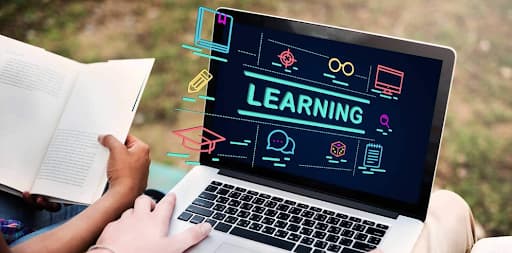In recent years, the digitalization of education has become one of the most significant trends worldwide, and the Czech Republic is no exception. The transition to digital technologies in the educational process has opened new horizons for both teachers and students. Modern educational tools, such as e-books, online courses, and virtual laboratories, are significantly changing the traditional approach to teaching. However, despite the numerous opportunities that digitalization provides, it also presents certain challenges to the education system. In this article, we will explore how digitalization affects education, what new opportunities it opens for students and teachers, and what challenges the system faces.
If you are looking for trusted online casinos with a variety of games from leading global developers, visit novecasino.net. Here, only reliable platforms are presented, offering a wide range of gaming options and exciting opportunities for everyone. Each player can find a casino with favorable conditions and a bonus program, making your gaming experience even more thrilling and profitable.
Advantages of Digitalization in Education
Digitalization brings significant changes to both the teaching process and learning itself. One of the biggest advantages is access to educational resources from anywhere in the world. Students can gain knowledge not only in the classroom but also through online platforms, offering flexibility in learning. Virtual classrooms allow students to overcome geographical and time constraints, while modern digital tools enable personalized learning according to each student’s needs.
Thanks to digital platforms, teachers have new opportunities to interact with students, improve materials, and assess their progress. Services such as electronic journals make it possible to instantly track student performance and provide feedback. This promotes a more individualized approach and helps identify knowledge gaps more quickly.
Furthermore, digitalization helps teachers implement innovative teaching methods. For example, the use of virtual and augmented reality allows students to “immerse” themselves in study materials, which significantly enhances knowledge retention and critical thinking development. Such approaches open new horizons in STEM education (science, technology, engineering, and mathematics), providing students with unique opportunities for hands-on learning.
Impact of Digitalization on Teachers
For teachers, digitalization presents both opportunities and challenges. On the one hand, new technologies make lessons more interactive and engaging for students. Teachers can use multimedia materials such as videos, animations, and 3D models to explain complex concepts. This aids in better material comprehension and boosts student motivation.
On the other hand, digitalization requires teachers to acquire new skills and knowledge in information technology. To effectively integrate digital tools into the educational process, teachers must continuously learn and develop their digital competencies. In this context, educational institutions are obligated to provide their staff with resources for professional development, including training and courses on working with new technologies.
Moreover, despite the benefits of digitalization, teachers face the challenge of transferring traditional teaching methods into the digital environment. Often, adapting old educational methods to online formats is difficult and requires time and effort. In some cases, this can lead to resistance from teachers, particularly those accustomed to established teaching methods.
Challenges for Students
For students, digitalization also has its pros and cons. One of the main advantages is access to online resources that can help improve their understanding of subjects and broaden their horizons. Students can use various online courses and video materials for additional learning, which allows them to deepen their knowledge and better prepare for exams.
However, digitalization also presents certain challenges for students. One of them is a decrease in attention span. Constant use of digital devices can distract from the learning process, as students often face the temptation to switch to entertainment websites, such as online casinos, games, and social media. It is important for students to manage their time effectively and not lose focus on their studies.
Additionally, digitalization creates the problem of unequal access to technology. Not all students, especially those from low-income families, have the means to purchase modern devices or stable internet access. This can lead to an imbalance in educational levels and create additional barriers for some students.
The Role of Digitalization in the Future of Education
In the future, digitalization will continue to evolve, and its impact on education will only increase. A current trend is the use of artificial intelligence and machine learning to create adaptive educational systems that can adjust to the individual characteristics of each student. Such technologies allow the learning program to be automatically adapted by selecting tasks and materials based on the level of knowledge and needs.
It is expected that, in the future, both teachers and students will be able to use more sophisticated tools to analyze the learning process and results, thus improving the overall effectiveness of education. For example, big data analysis will help identify which teaching methods are most effective for different groups of students, while algorithms can offer personalized recommendations to enhance educational outcomes.
Conclusion
The digitalization of education represents an important step forward, opening new opportunities for teachers and students. It contributes to improving accessibility and the quality of education, allows the integration of innovative teaching methods, and helps develop digital competencies. However, the implementation of new technologies is also accompanied by challenges, such as the need for teacher training and addressing distractions for students. It is important to remember that effective use of digital technologies requires not only technical solutions but also pedagogical literacy and attention to equal access to education for all students.
